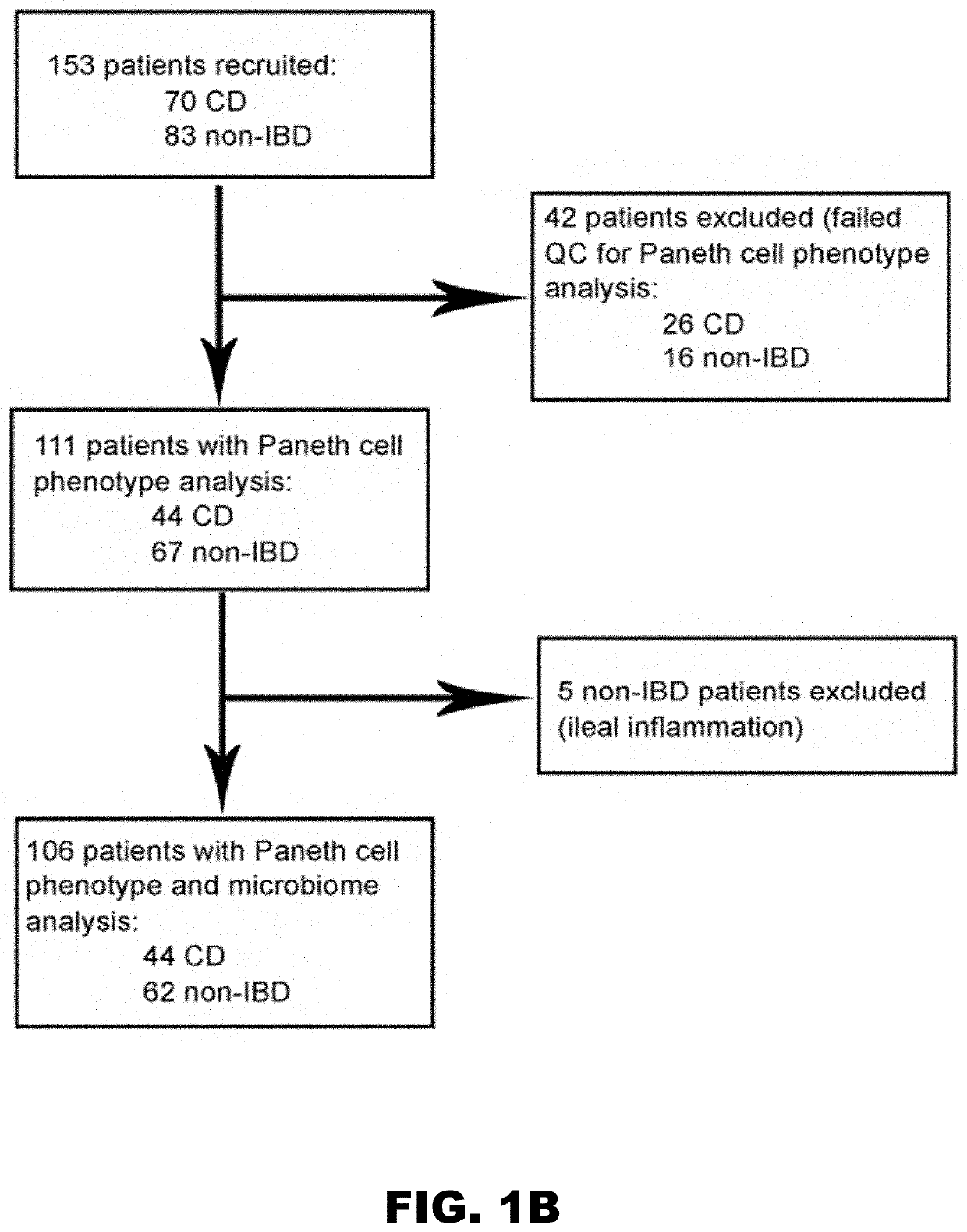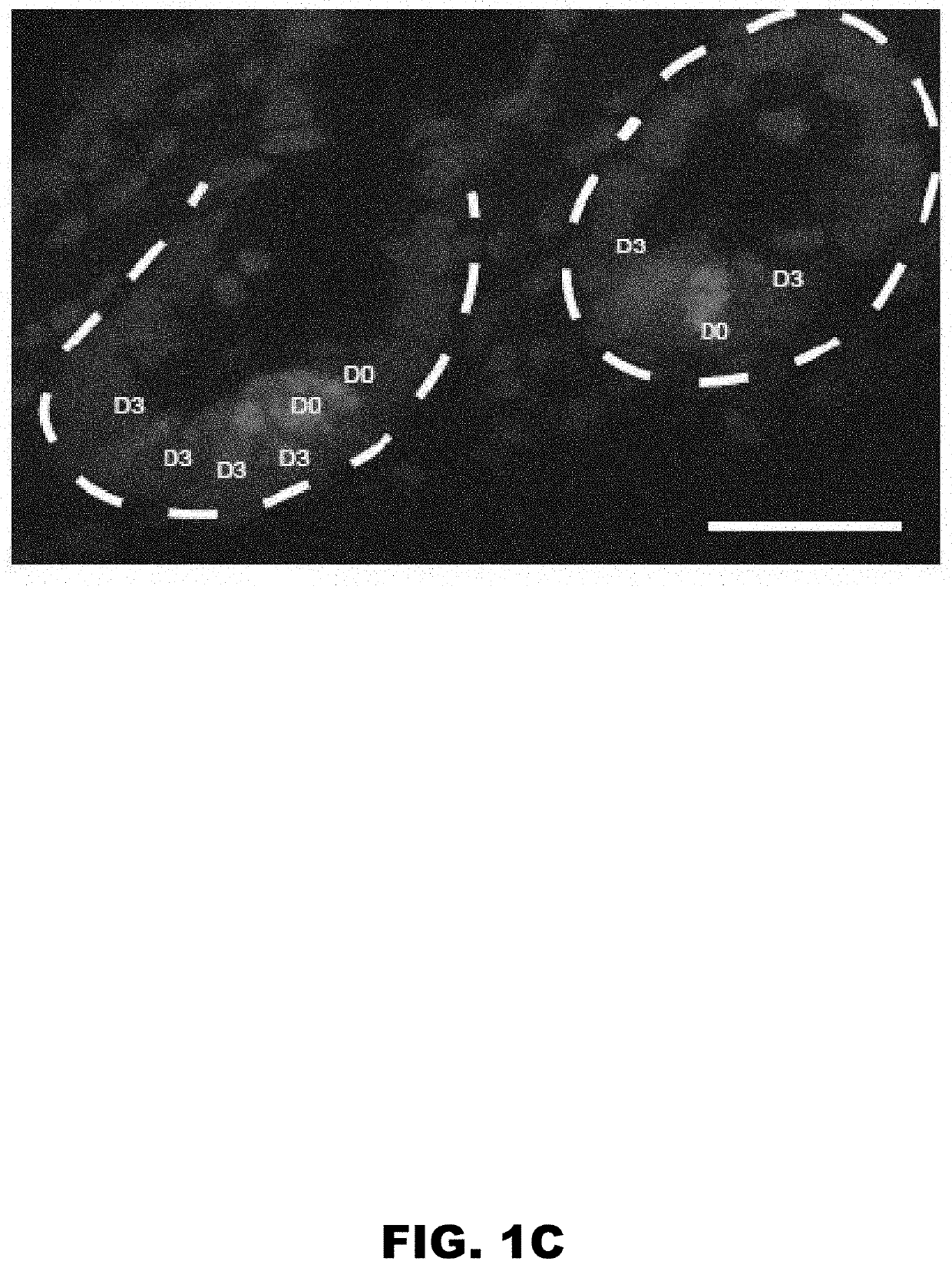Methods for prognosing crohn's disease comprising human defensin 5 (HD5)
a crohn's disease and human defensin technology, applied in the field of human defensin 5 for prognosis of crohn's disease, can solve the problems of difficult to study the pathogenesis and prognosis using simple methods
- Summary
- Abstract
- Description
- Claims
- Application Information
AI Technical Summary
Benefits of technology
Problems solved by technology
Method used
Image
Examples
examples
[0071]The following examples are included to demonstrate various embodiments of the present disclosure. It should be appreciated by those of skill in the art that the techniques disclosed in the examples that follow represent techniques discovered by the inventors to function well in the practice of the invention, and thus can be considered to constitute preferred modes for its practice. However, those of skill in the art should, in light of the present disclosure, appreciate that many changes can be made in the specific embodiments which are disclosed and still obtain a like or similar result without departing from the spirit and scope of the invention.
Introduction for Examples 1-5
[0072]Crohn's disease (CD) is a form of inflammatory bowel disease (IBD) rooted in environmental triggers of immune dysregulation that occur in genetically susceptible hosts. There is mounting clinical evidence that environmental factors are critical in CD pathogenesis. While environmental factors may pla...
example 1
CD Patients Showed Higher Prevalence of Type I Paneth Cell Phenotype than Adult CD Patients
[0077]We previously analyzed two cohorts of adult CD resection cases from St. Louis (n=170) and Los Angeles (n=361) (FIG. 1A and FIG. 7A). Prevalence of the Type I Paneth cell phenotype (defined as ≥20%, abnormal Paneth cells) was 26% and 19%, respectively (FIG. 1A, FIG. 7A, and FIG. 7B). In addition, we also analyzed a cohort of pediatric resection cases from St. Louis (n=73) and found that the prevalence of the Type I Paneth cell phenotype in this cohort was much higher (40%; FIG. 1A and FIG. 7C). To investigate the biological relevance of the Paneth cell phenotype in pediatric CD, we recruited and analyzed an independent, prospectively-collected pediatric cohort (Milwaukee; FIG. 1A and FIG. 1B, and Table 1). For this part of the study, multiple mucosal biopsies were obtained for analysis of Paneth cell phenotype, microbiome and host mucosal transcriptome. We previously showed that biopsy sa...
example 2
ll Phenotype Did not Correlate with Genotypes in Pediatric CD
[0078]We correlated the degree of Paneth cell defect (percentage of Paneth cells with normal morphology) with numbers of ATG16L1 T300A or NOD2 risk alleles. As shown in FIG. 8A and FIG. 8B, neither the numbers of risk alleles of ATG16L1 T300A nor NOD2 correlated with Paneth cell phenotype. Likewise, neither the sum total of ATG16L1 T300A nor NOD2 risk alleles correlated with Paneth cell phenotype (FIG. 8C). This suggests that in this population of pediatric CD patients, environmental factor(s) may play a more significant role in modulating Paneth cell function.
PUM
 Login to View More
Login to View More Abstract
Description
Claims
Application Information
 Login to View More
Login to View More - R&D
- Intellectual Property
- Life Sciences
- Materials
- Tech Scout
- Unparalleled Data Quality
- Higher Quality Content
- 60% Fewer Hallucinations
Browse by: Latest US Patents, China's latest patents, Technical Efficacy Thesaurus, Application Domain, Technology Topic, Popular Technical Reports.
© 2025 PatSnap. All rights reserved.Legal|Privacy policy|Modern Slavery Act Transparency Statement|Sitemap|About US| Contact US: help@patsnap.com



